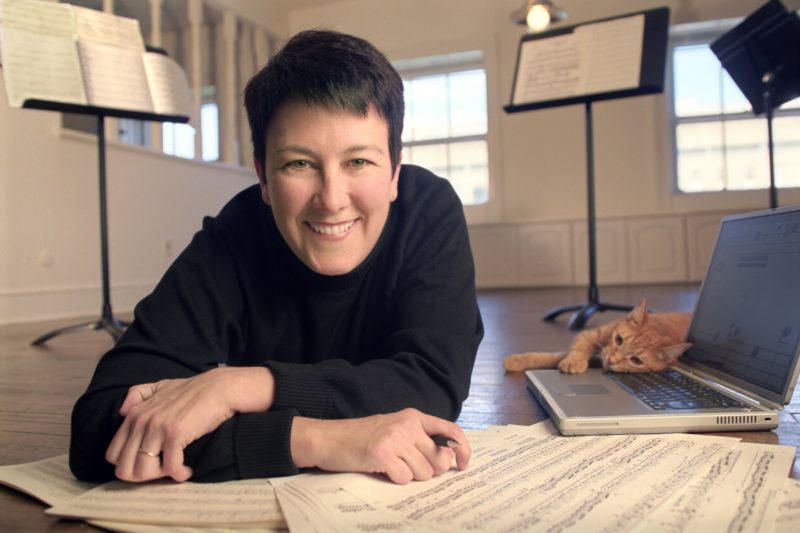
When is a work of art complete?
We explore this and more in our casual interview chat with Pulitzer Prize wining composer Jennifer Higdon, whose work “Dance Card” is on the program of our “Dance Like No One’s Watching” concerts on Sept. 23-24 at Miller Outdoor Theatre and The Church of Saint John the Divine, respectively.
The five-movement string orchestra work comprises serenades, wild dances and fanfares. ROCO co-commissioned the work with the New Century Chamber Orchestra and the Chicago Sinfonietta.
Q: With a title such as “Dance Card,” I’m willing to bet that many are wondering: Do you like to dance? And do you have a dance “style” or a special move?
Jennifer Higdon: I have to admit that I hadn’t thought about this as I’m not a good dancer, which may be a little odd for someone who writes music! I guess my sense of “dancing” is purely in my head. So I’m afraid I don’t have a special move or style . . . only on paper.
Q: In writing music for “dance,” what are important elements?
Jennifer Higdon: The most important element is a combination of rhythm and steady pulse. Since this is a collection of dances for a collection of string players, it is important in composing to think of each of the players as if they’re dance partners, moving together.
Q: Your movements are titled in such descriptive ways. Curious: Do you enjoy writing?
Jennifer Higdon: Indeed I do, although writing words takes much more effort for me than writing musical notes.
Q: When sitting down to compose, what tools do you use? Are you a manuscript and pencil person, composer or . . . ?
Jennifer Higdon: I use manuscript, pencil, a blank artist’s sketchbook and a computer. In the early stages, usually at the start of each movement, much is done on paper — everything from melodies and harmonies to verbal descriptions of what I want a movement to do. Once I start writing the music, I move to the computer, while still periodically going back to pencil and paper to sketch additional ideas.
Q: How do you know when your pieces is complete and you’re done with edits?
Jennifer Higdon: I usually keep working on each movement until it doesn’t feel like I can make any more changes. Once rehearsals begin for the premiere, I usually make more changes. After the premiere, I make more changes, although they are usually tweaks. The last two sets of changes are often dynamics, or ideas that the string players have given me to make their music clearer (bowings and articulations, sometimes an added line).
I don’t know if any composer ever feels that a piece is completely done. We always wonder if there’s a little bit more tweaking that needs to happen.
Perhaps all art is like this?
___
ROCO presents “Dance Like No One’s Watching” on Friday, Sept. 23, at Miller Outdoor Theatre (free) and on and Saturday, Sept. 24, at The Church of St. John the Divine ($15 – $35).

Leave A Reply